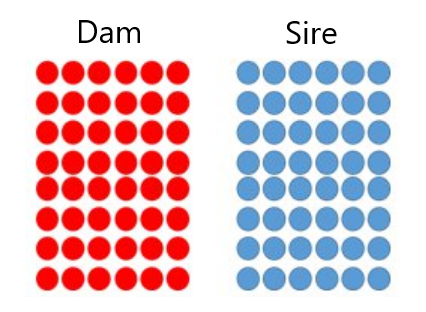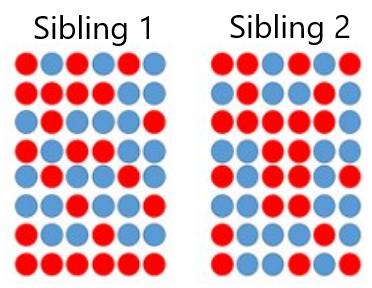For the majority of us, we are lucky enough to have brothers and sisters, siblings who we share the same parentage with. Does this mean that we are the exact same as our ‘full brothers’ and ‘full sisters’? If your brother is an Olympic weight lifter and you train and eat just as good as him, does this mean that you are guaranteed to go to the Olympics also?
In the sporting world, there are some examples of siblings performing almost as good as each other. Take Venus and Serena Williams for example or one closer to home in Gary and Paul O Donovan. However even when we look at these examples of both siblings performing well, one still outperforms the other. Serena Williams I’m sure you will agree has been a more successful tennis player than her older sibling Venus.
The point however is that the above examples are rare. There are sets of brothers playing county hurling or football together but there are a lot more examples of ‘one who made it and one who did not’. One brother may have been taller and went on to play professional basketball in the NBA, the other may have been shorter and never made the cut. The reason being, we are not all the same and we do not inherrit the exact same set of genes and this is no different in cattle.
A cow/bull just like their siblings inherit 30 chromosomes from each of their parents. But because of many different DNA combinations being possible at mating, their chromosomes have a different combination of genes than their siblings. Genes that control a specific function are located at a unique spot on a certain pair of chromosomes. Yet on average, half of the genes are still the same. Why is this? Cattle have two copies of each gene. This means that a cow’s parents can pass either of their two copies down to them and their siblings.

Imagine their parent’s genes as coloured coins. Each coin has a red and a blue side, representing the two copies of each of their genes. The chances of inheriting a red or a blue is just like flipping a coin, totally random. Since cattle have 22,000 genes in their DNA, whether they inherit the ‘red’ or ‘blue’ of each gene is like flipping a coin 22,000 times. If we do that, we are most likely to get 1/2 ‘reds’ and 1/2 ‘blues’.

Even though full siblings will have inherited genes differently from their parents, we generally do not have this data until an animal is genotyped. This is why cattle get a parental average at birth and at this stage full siblings will have the same index figures. When genotyped we can access this data and identify the difference in genes between siblings. Index figures will almost certainly be different after being genomically tested.
Why are figures different when I haven’t genotyped them yet?
This is a very valid question, we now know full siblings have inherited genes differently but how can they have different figures without genomics to prove this? The answer is phenotypic data (weights, calving surveys etc.) For example, full siblings born on the same day (twins/embryo births), have different indices at 6-months of age, one has an index of €100 and one is €91. The calves are only 6 months old and haven’t been genotyped, how can they have a different index? In this example both calves have been weighed recently with one calf out performing the other. There was also a difference at birth with one calf being born 9kg heavier than the other, one requiring some assistance and one being a normal calving. Although only 6 months of age, the data for calving survey, birth weight and weaning weight is different for these full siblings. There are already performing differently even at this early stage which isn’t surprising.
So even though full siblings have the same father and the same mother, receive 50% of their DNA from their sire and 50% from their dam, the full siblings can have differences in their genetic makeup. Genomics data allows us to identify better what exact genes have been inherited from each side and for this reason genomics is much more accurate than a parental average (PA). Phenotypic data will also help identify difference between full siblings.
